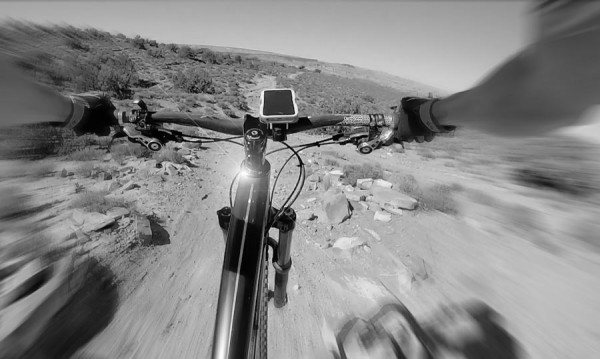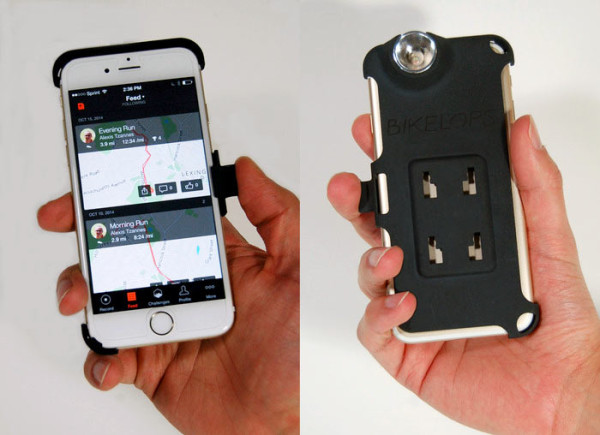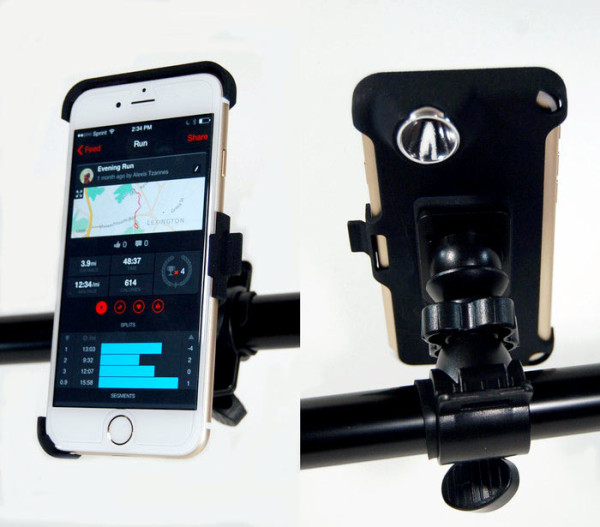
iOmounts makes device mounts with a patented magnetic technology that attaches simply, and adjust easily. At the Consumer Electronics Show opening next week, they will release the NOMAD mount to attach almost any device to a pair of handlebars. They say that with the increase in cycling apps available for phones, and GPS capability, a mount for a phone is all that is needed , instead of a dedicated device.
They are not giving a lot of details until the show, but if it works anything like their super-adjustable mounting stands, it should be pretty nice for ease of use and adjustability. Jump past the break to see their standard device mounts (not for bikes), and also see ideas on using an iPhone as a bike light and dusting off your old trainer by turning it into a multimedia exercise center…
From iOmounts:
“These new products demonstrate the versatility of our technology and add to the already countless number of applications for smart phone and tablet users,” says iOmounts founder and designer Tamas Kovacs. “With these additions to the iOmounts system, users can now seamlessly transfer their devices from the kitchen counter to a pair of handlebars, and we couldn’t be happier to introduce them on the grandest stage at International CES.”
A design-focused company at its core, iOmounts creates products that enhance the aesthetics and functionality of most mobile electronic devices. The non-bike mounts are pretty neat, so if the bike technology is similar, it would be pretty cool to put a phone on and off the bike that fast.

Bikelops
Bikelops has the idea of being able to use your phone as a bike light. By creating two parts, a case that has a reflector for the light, and a bike mount that integrates with the case, they might have done it.
They started by testing a bunch of different light reflectors to find one that actually increased the overall output by 1.5-7 times, but also smoothes out the light so its not such a single spot. When not mounted to the bike, it can also be used as a flashlight, with the same better effects than the standard iPhone LED flash. It might be confusing, but this is not an additional light, but is simply a reflector that goes over and around the existing iPhone LED flash, to control it better. Similar to the headlight in your car, the bulb on its own would behave very differently on its own, or properly installed in the complete headlight housing.

Shown above is a comparison of the light beam between the iPhone 6 LED and an iPhone 6 in a Bikelops mount. As you can see, the Bikelops evens out the light in a way that would be more useable as a bike light.
The creators of the Bikelops are realististic, and state right away that there is no way this, or any other idea could make the iPhone LED as bright as a high-powered bike light. However, it is bright enough to work in a pinch or a short distance with the Bikelops reflector, and thats where the idea came from. And yes, at least one of us has used their iPhone light to ride back to camp in pitch black and it does indeed provide enough light to safely (and slowly) navigate trails by bike. Because of the high cost of tooling, they are using Kickstarter to get moving, and are starting with only the iPhone 5, 5S and 6.

SPECS –
- Weight: 2.4 ounces (68 grams)
- Construction Material: ABS
- Installation tools required: none
- Fits standard round handlebars 20-32 mm in diameter
- Batteries required: none (uses phone LED/battery)
- Phone models currently supported: iPhone 5, 5S, 6
- Lifetime warranty: if you have any problems or the Bikelops breaks during normal use, we’ll send you a new one.
Check them out on Kickstarter.
BRoller
BRoller wants you to dust off your old roller (trainer to us on this side of the pond), and enjoy a multimedia experience aboard it, whether it be training or their new idea of e-tourism.
The system works by mounting a unit under your saddle with a servo that could adjust the resistance of standard trainers , sensors on the crank and wheel, and then a phone or tablet device up front. The idea is that this system will be able to take old non-multimedia trainers and update them, so you can use your existing trainer rather than fork out the cash for a new electronic one.
BRoller also thinks there is a big market to start using trainers for e-tourism, being able to become a cycle tourist through their app to any place on the globe, without having to spend the money to actually go there.
There are a lot of ideas presented in the campaign, but not all of the solutions are clearly laid out. Hopefully, its just a lost-in-translation, and the Spanish company has a way to allow the servos to work with existing trainers, so they can reach their ambitious €180,000 goal.